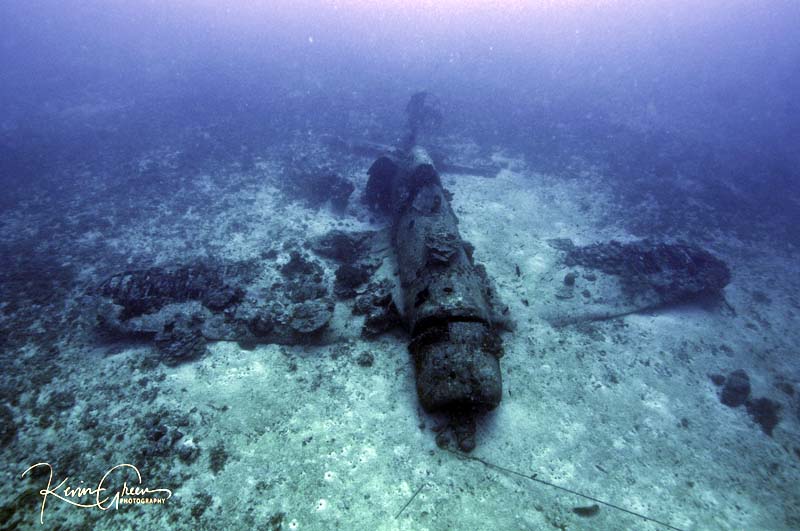F4U Corsair: From Sky Dominance to Underwater Sentinel
The F4U Corsair is another legendary aircraft from World War II, known for its distinctive gull-wing design and powerful performance. Like the Wildcat, many Corsairs found their final resting places underwater due to the intense aerial combat of the period.

Historical Perspective:
The Chance Vought F4U Corsair, with its iconic inverted gull-wing design, is instantly recognisable and holds a special place in the annals of aviation history. Originally developed for the U.S. Navy and Marine Corps, the Corsair quickly became one of the most formidable fighter-bombers during World War II, gaining a reputation for its speed, agility, and potency in combat. Its unique design not only made it stand out visually but also allowed it to accommodate the large propeller necessary for its powerful engine.
Journey Beneath the Waves:
While the Corsair’s aerial prowess was notable, the fierce battles over the Pacific and other theatres inevitably led to many being shot down or suffering accidents. As a result, numerous Corsairs found their resting places in the waters below, from shallow lagoons of Pacific islands to deeper oceanic trenches.
Diving the Corsair:
Today, divers seeking a piece of World War II history underwater often set their sights on submerged Corsair wrecks. Encased in coral and surrounded by marine life, these wrecks transport divers back in time. The Corsair’s unmistakable silhouette, with its bent wings and long fuselage, is a sight to behold beneath the waves. Over time, many of these aircraft have transformed into thriving marine ecosystems, with their metal structures providing shelter and sustenance to a variety of sea creatures.
Honouring the Legacy:
Behind every submerged Corsair is a tapestry of stories – tales of the pilots who maneuvered them, the engineers who designed them, and the battles they fought. These wrecks serve as underwater memorials, reminding divers of the bravery, innovation, and sacrifices of a bygone era.
Conservation and Respect:
Divers exploring Corsair wreck sites are urged to do so with reverence and care. Preserving these historical relics is of paramount importance, both for their historical value and the marine ecosystems they now support. It’s crucial to approach these sites with a non-intrusive mindset, ensuring that the Corsair’s legacy is preserved for future generations.

